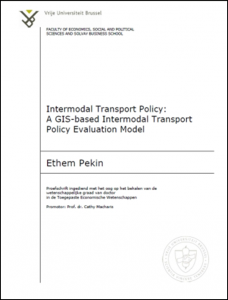
In this dissertation, a number of cases were analysed with the GIS-based model. Looking at the hinterland transport from the seaports, the outcomes of the model can deliver Intermodal transport in general (2)Intermodal transport policies (3)Scenario-basedanalysisfor Belgium (5)Scenario-basedanalysis for Turkey (6)Introduction (1)Conclusions (7)GIS-based intermodal transport model (4) policy recommendations for the decision makers. A special attention is given for three main policy topics. Subsidies are indeed increasing the market area of intermodal transport, but also create a shift from barge to rail is induced in areas where both types of terminals are available. The same is valid on a European level, where the different regions/countries are introducing different subsidy schemes. For a policy maker, it is necessary to prevent possible negative side effects of these subsidy schemes. The outcomes of the model indicate that subsidies both for rail and inland waterway transport are necessary in Belgium but should be coordinated more. This is also the case for Turkey, where rail transport should be supported. Another policy area is included in the possibility to internalise the external costs. In parallel to the European directives, the model internalised the external costs into the market prices for all transport modes, keeping in mind which taxes were already paid by these transportation modes. With regard to the overall price measures, the model showed that an internalisation of external costs would also stimulate intermodal transport in a substantial way and with a better balance between the two types of intermodal transport. A final policy topic is the future terminal cases that gave perspectives on the intermodal terminal landscape in Belgium and in Turkey. The policy implications from the model are that the terminal landscape is already very dense in Belgium and that potential new locations should be examined carefully in order not to cannabalise the market areas of the existing ones and keeping the volumes into account for their potentials. Additionally, the analysis of potential new locations for terminals underlines how important it is to have a broader view on the location of terminals and to take into account new initiatives. Finally, new terminal analysis in Turkey proved to have positive implications on the intermodal transport that is still in its emerging phase.
Promotor: Prof. Dr. Cathy Macharis
